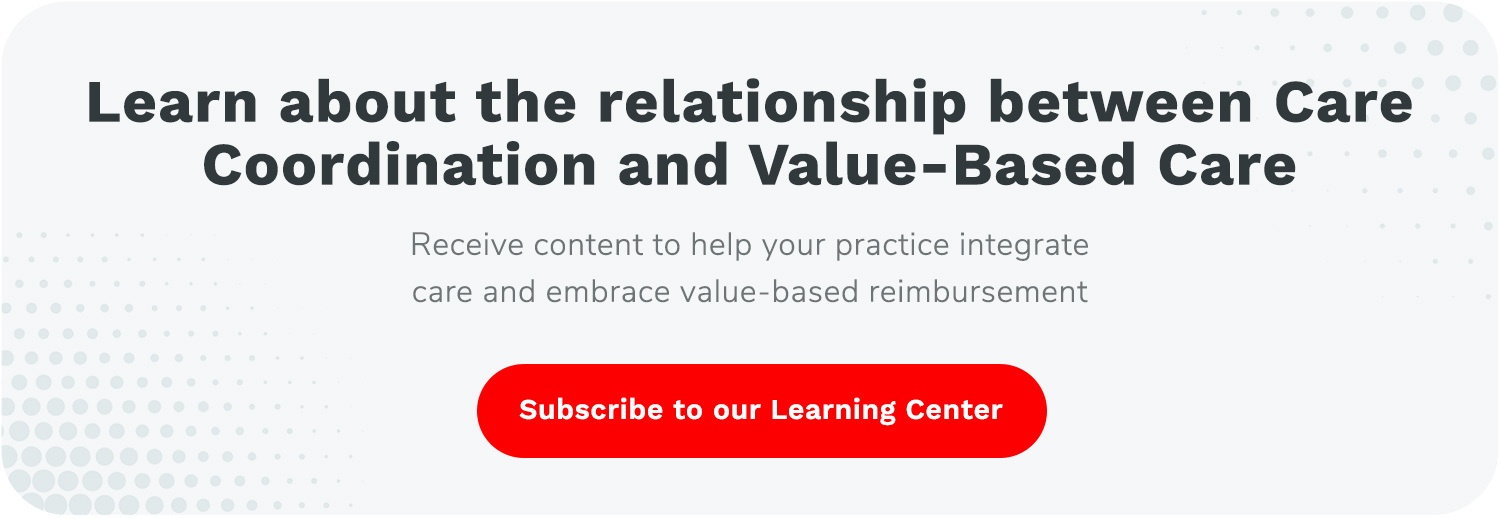Remote Patient Monitoring (RPM) | Value-Based Care
Implementing Value-Based Care With Remote Patient Monitoring (RPM)
Implementing value-based care can help providers improve patient health and reduce care costs, but it has introduced new, overwhelming challenges to physician practices.
For example, private insurers and Medicare now use alternative payment models, such as the Merit-based Incentive Payment System (MIPS), to promote value-based care. But these models tie provider compensation to specific performance metrics in order to drive change. In these arrangements, providers find that they could miss reimbursement and revenue opportunities if they fail to meet or exceed such metrics.
This shift has made the healthcare industry apprehensive about an overall transition to value-based care. A lack of specificity about how to actually implement it has made the matter more difficult.
In order to meet specific performance metrics, providers must find ways to emphasize clinical efficiency and improve health outcomes. Care coordination offers a broad response to these challenges. But specific telehealth and care management programs can be more exact in how they address value-based care.
Remote Patient Monitoring (RPM), a program that’s overseen by Medicare, is one example.
At ThoroughCare, we’ve provided digital care coordination solutions to clinics and physician practices across the US. We’ve helped many of these groups establish RPM programs to improve patient engagement, enable better health, and maximize clinical efficiency.
In this article, we’ll review what RPM is, as well as cover three core areas where the program can help your practice implement and transition to value-based care.
What is Remote Patient Monitoring (RPM)?
RPM is one of several telehealth programs offered by Medicare.
Using various digital devices, your practice can collect patient vitals on an ongoing basis, between regular office appointments. This data can then be used to inform care decisions. Any patient covered by Medicare Part B can enroll in remote monitoring services. It pays for 80% of this benefit, and many secondary insurances will make up the difference. As well, other non-Medicare, primary insurance providers cover the program.
RPM is a monthly billable program. Patients must receive at least 20 minutes of non-face-to-face service each month for your practice to receive reimbursement. Reimbursement is also offered for setup and training related to RPM devices, as well as daily use by patients.
As the name suggests, services are delivered through remote interactions. Patients take devices home with them, and they collect readings daily, which are then digitally transmitted to their provider. These readings can include, but are not limited to:
- Blood pressure
- Weight
- Blood glucose
- Heart rate
Data should be collected with a digital solution or hub that is compliant with the Health Insurance Portability and Accountability Act (HIPAA), such as care coordination software.
Providers can be reimbursed for offering this service.
Rates vary depending on the provider's location and facility type. Please search the Physician Fee Schedule from CMS for the latest information.
3 Ways That RPM Enables Value-Based Care Success
A remote monitoring program can help your practice address specific performance areas that are relevant to value-based care. Below, we’ll review three of these, so you have a better sense of how exactly RPM can help you implement and transition to this new care model.
1. Improve Patient Engagement and Satisfaction
Value-based care emphasizes creating a satisfying patient experience. It aims to provide a more transparent, valuable exchange in a world where most everyone finds healthcare complicated and costly.
Patient engagement is important to value-based care because it can influence health outcomes, especially when it comes to preventive care. Whether that involves diet and exercise or disease screening, an engaged patient is more likely to participate in these preventive measures.
An RPM program can help engage patients by aligning their attention to their vital signs. By emphasizing the daily collection of blood pressure or heart rate through a simple device, within seconds, you can focus your patient on their health, in real-time. Sustained participation in RPM can then help create an ongoing awareness of one’s well-being.
This awareness can help motivate patients to engage with preventive health services and make smarter lifestyle choices. Greater engagement can especially be of benefit to people living with chronic conditions, such as diabetes. This can have a real impact on health outcomes, which can satisfy your patients.
2. Enable Better Patient Health
With remote monitoring, your practice can more easily manage chronic conditions by focusing on underlying indicators of health, such as blood pressure or blood glucose. The program supports the continuous observation of these vital signs, which can help you track any changes in a condition’s severity as they happen.
By isolating these vitals and capturing trends over time, your practice can gain greater insight as to how such indicators influence your patient’s health. This can help you prescribe treatments or interventions to better manage the chronic condition in question.
For example, Pure Cardiology, a practice located in Charlotte, NC, saw 100% of RPM-enrolled patients lower their A1Cs in three months of participation. A study published by the practice also notes that “average systolic blood pressure had been reduced by 12 mmHg per patient” in the same amount of time.
Real-time data collection also enables you to spot emergency health issues before they happen.
With certain software solutions that help manage an RPM program, it’s possible to set target ranges for specific vital signs. For example, if your patient’s heart rate spins out of the desired range, an alert can be sent to them and your staff, prompting intervention. This can help reduce hospital admissions and emergency room visits.
3. Maximize Clinical Efficiency
With RPM, your practice can engage and treat a high volume of patients remotely. With monthly communications occurring via phone or telehealth platforms, and daily RPM device use by patients, your practice can regularly support a continuum of care, closing gaps in service and treatment, without overlying on office visits.
More importantly, RPM does not require provider time. Your staff, who is most often represented by a care manager, can perform nearly all of the tasks required for RPM.
On average, a care manager may be able to engage 100 to 250 patients per month. This range is based on feedback from providers who offer RPM services.
Software solutions can further streamline RPM. Task automation, scheduling tools, and health data integration can increase your practice’s capacity and help reduce your staff’s workload, as well as simplify the data collection process.
Healthcare analytics solutions can further promote efficiency by helping your practice interpret robust amounts of RPM data. With these insights, it’s possible to better target patient treatments and optimize clinical operations.
It’s also possible to outsource your RPM program. In such arrangements, you can collaborate with an outside service provider that can fully manage your program. This allows you to offer further service and clinical access to your patients without committing additional staff resources.
Finally, RPM reimbursements can help your practice establish a new source of revenue. This can help expand capacity in other areas or support the adoption of new technology to further increase efficiency.
Implement Value-Based Care With RPM
Value-based care revolves around general quality performance metrics, such as patient engagement, the effectiveness of treatment, and clinical efficiency. But it presents you and other providers with a challenge, in that you’re asked to meet these expectations without a clear-cut way to do so.
Missing the mark could mean that your practice fails to maximize reimbursement opportunities.
A remote monitoring program can help your practice meet the performance metrics underlying value-based care. The program can also help your practice adapt to reimbursement challenges, and drive revenue.
But what exactly are the reimbursement rates for RPM?
Medicare supports several CPT codes for this telehealth solution, but it’s important to know which of them best applies to the level of care you provide. Learn more about billing requirements and reimbursement rates for RPM to understand the program’s revenue potential.
Digital software solutions are available to help your practice embrace integrated, coordinated care through RPM. At ThoroughCare, we’ve designed our integrated care coordination software for easy clinical use with an intuitive interface that allows you and your team to engage patients through multiple care management, telehealth, and wellness programs.




